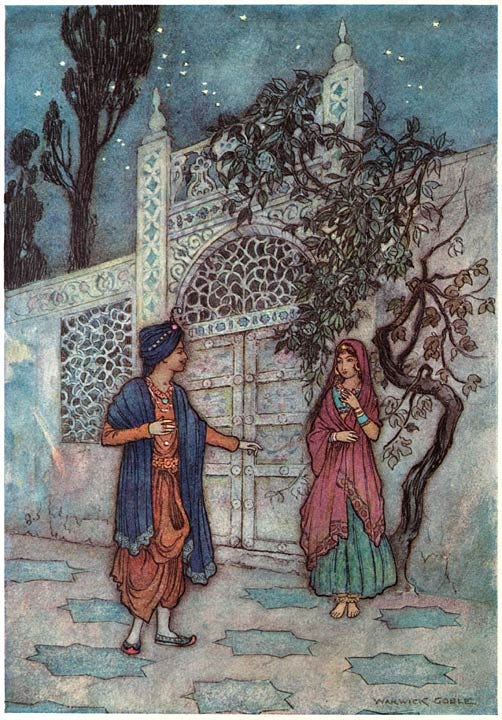Welcome to the Brown History Newsletter. If you’re enjoying this labour of love, please do consider becoming a paid subscriber. Your contribution would help pay the writers and illustrators and support this weekly publication. If you like to submit a writing piece, please send me a pitch by email at brownhistory1947@gmail.com. Check out our Shop and our Podcast. You can also follow us on Instagram and Twitter.
Local Folktales and Myths from Bengal by Afra Sampreety
The Bengal is rich with twisted folktales. Nurtured for decades after decades, passed on from generation to generation, these folktales still live off today among Bengalis everywhere. Whether your grandmother sang lullabies of it, or you read it in a book, learning these unique tales is a common experience for most Bengalis. Folktales are an important part of a culture and the community it belongs to. It preserves beliefs and ideologies that inherently belong to a certain community, which otherwise would have gotten lost in history.
Fear is the dominant and primary theme of most Bengali folktales. Ghosts and witches play a vital role in Bengali fairytales and mythologies. They are regularly mentioned in contemporary Bengali fiction too. These folktales were often shared in an attempt to warn locals of looming dangers around them. Despite switching thematically and physically based on different premises, the inherent characteristics and motives often remain the same. Most of these tales revolve around an otherworldly creature in form of “bhoot” (ghosts) or jinn (a spirit invisible to humans according to Islamic beliefs) with ill intentions. Needless to say, there are examples of good bhoot and jinns too, however, the evil ones are more commonly known. People are keener to share the wraths of a dangerous petni than the mercy of a kind daini.






